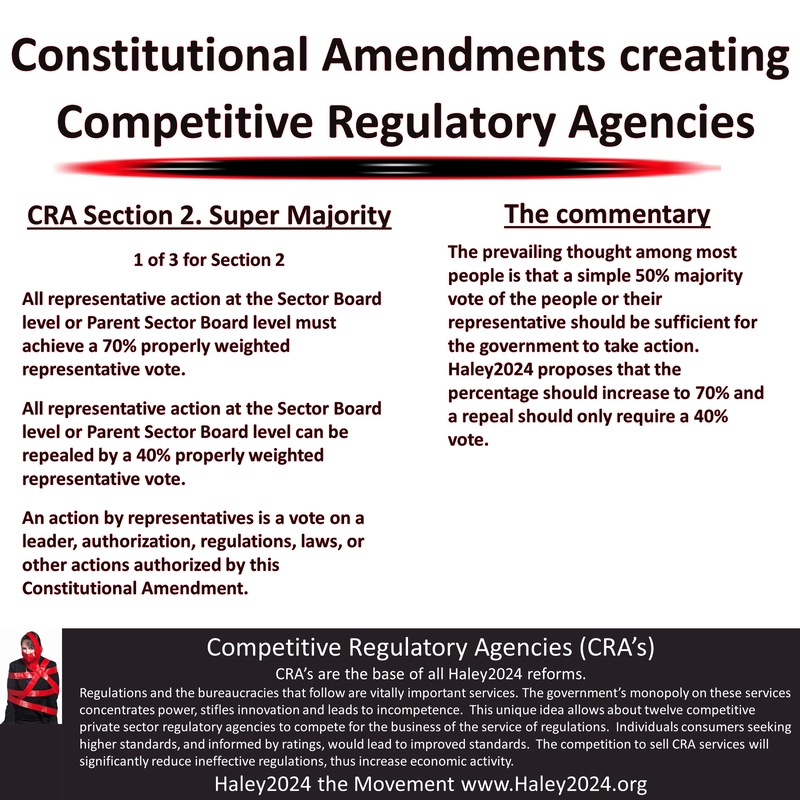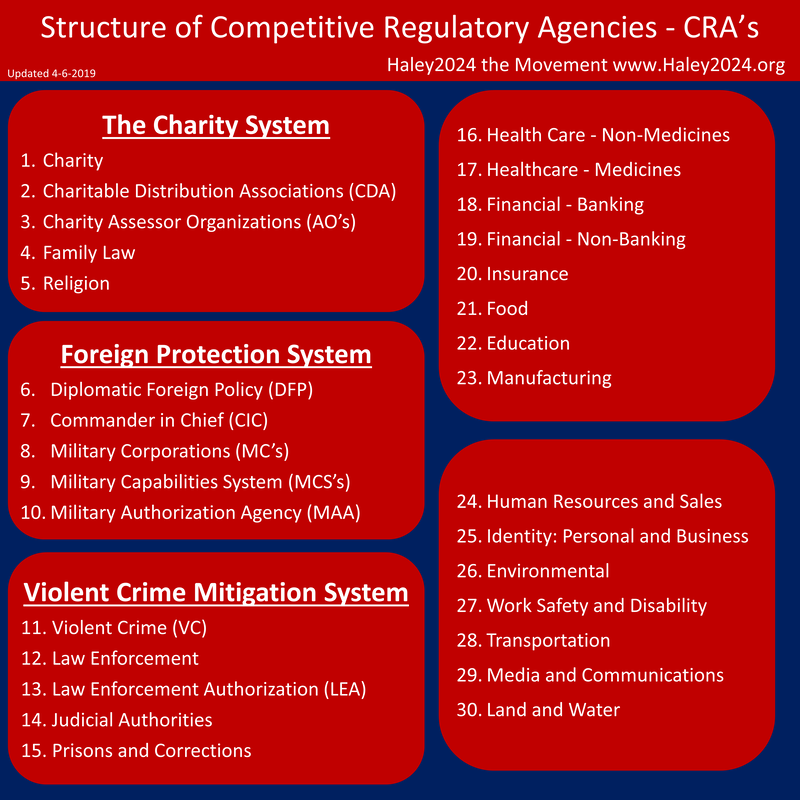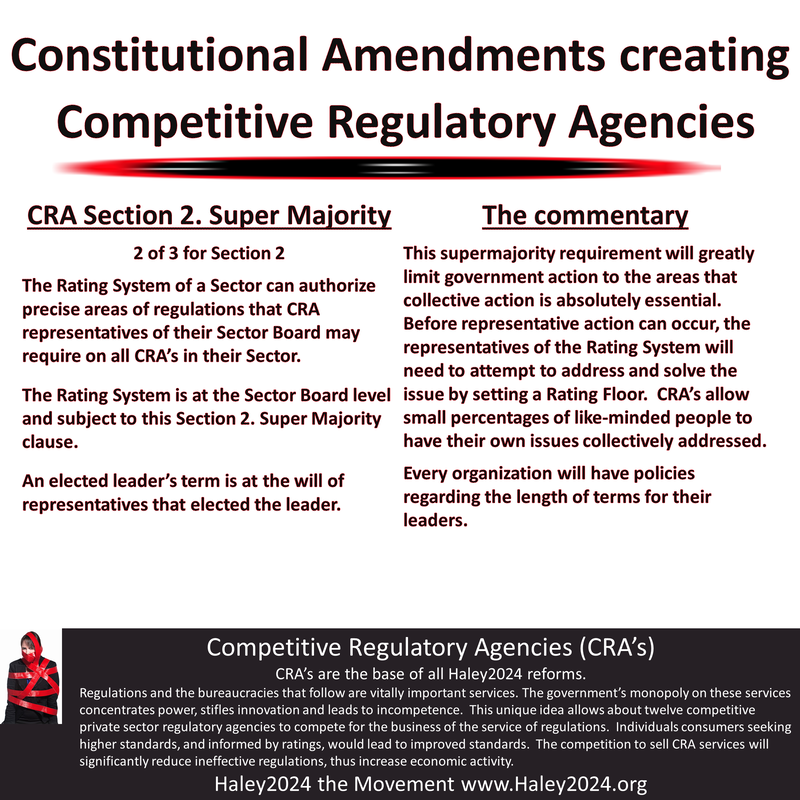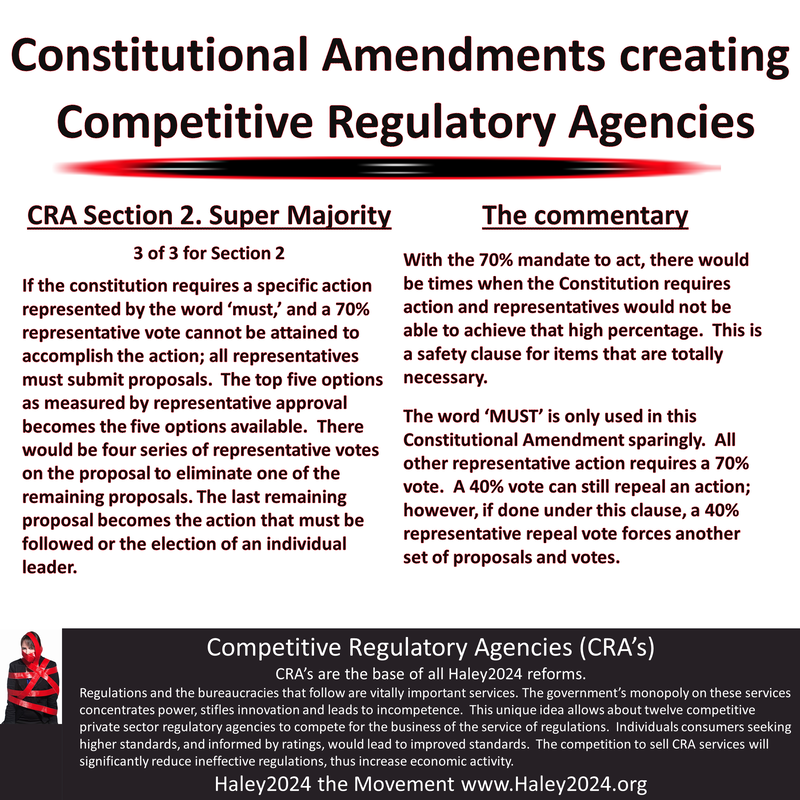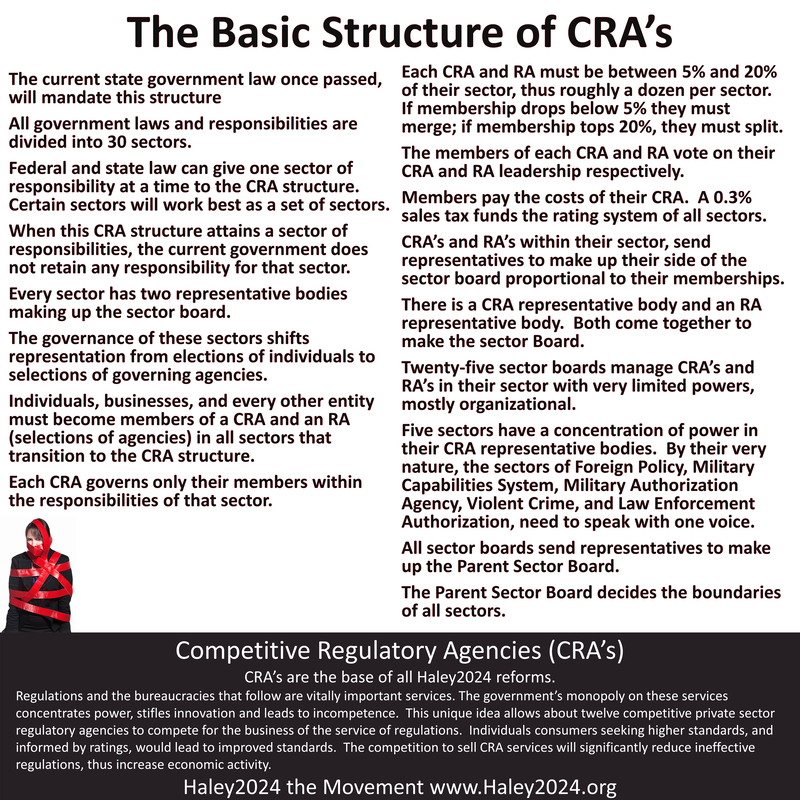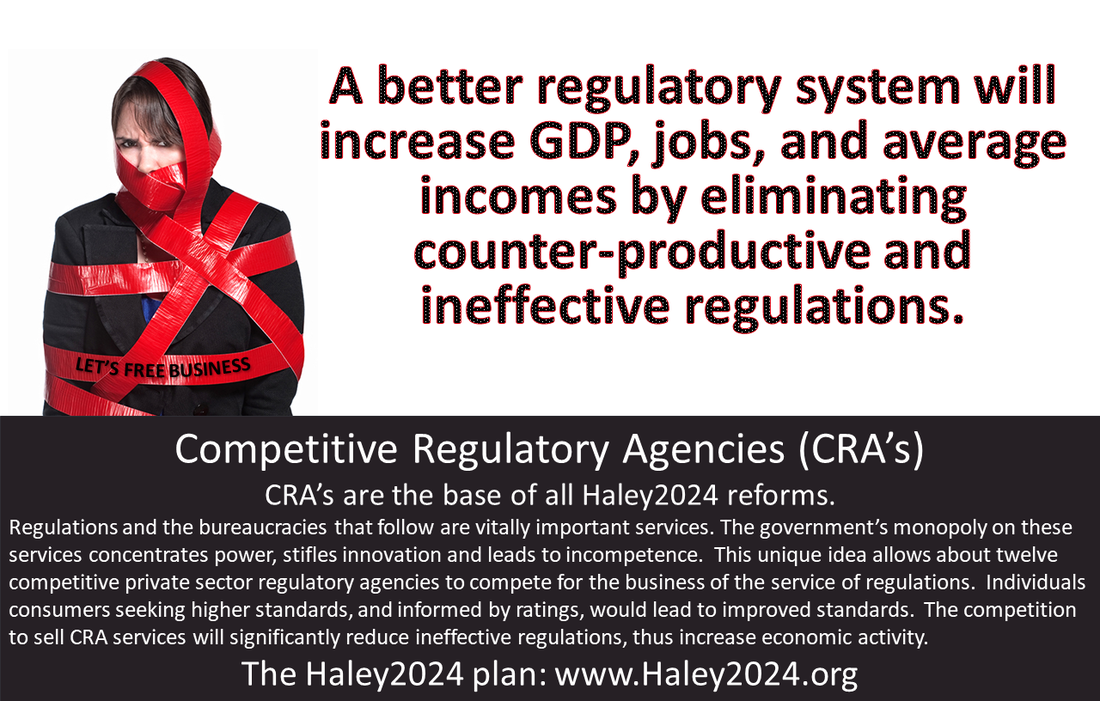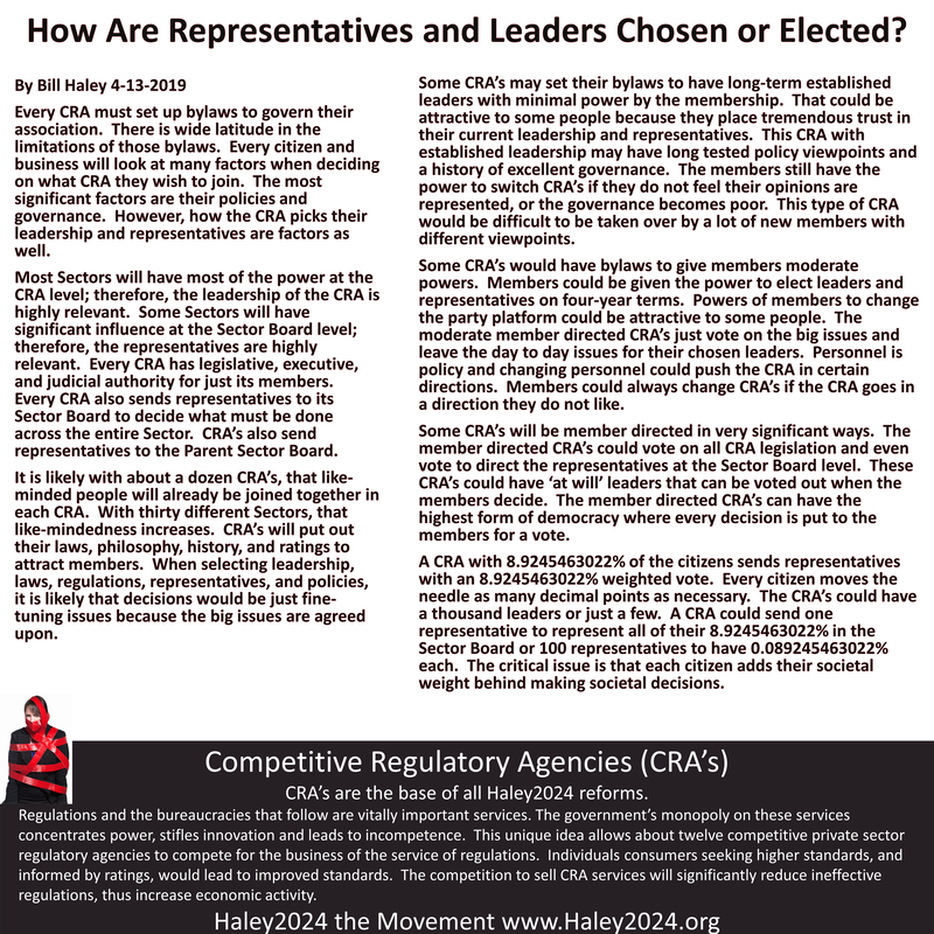| Every CRA must set up bylaws to govern their association. There is wide latitude in the limitations of those bylaws. Every citizen and business will look at many factors when deciding on what CRA they wish to join. The most significant factors are their policies and governance. However, how the CRA picks their leadership and representatives are factors as well. |
| Most Sectors will have most of the power at the CRA level; therefore, the leadership of the CRA is highly relevant. Some Sectors will have significant influence at the Sector Board level; therefore, the representatives are highly relevant. Every CRA has legislative, executive, and judicial authority for just its members. Every CRA also sends representatives to its Sector Board to decide what must be done across the entire Sector. CRA’s also send representatives to the Parent Sector Board. |
| It is likely with about a dozen CRA’s, that like-minded people will already be joined together in each CRA. With thirty different Sectors, that like-mindedness increases. CRA’s will put out their laws, philosophy, history, and ratings to attract members. When selecting leadership, laws, regulations, representatives, and policies, it is likely that decisions would be just fine-tuning issues because the big issues are agreed upon. |
| Some CRA’s may set their bylaws to have long-term established leaders with minimal power by the membership. That could be attractive to some people because they place tremendous trust in their current leadership and representatives. This CRA with established leadership may have long tested policy viewpoints and a history of excellent governance. The members still have the power to switch CRA’s if they do not feel their opinions are represented, or the governance becomes poor. This type of CRA would be difficult to be taken over by a lot of new members with different viewpoints. |
| Some CRA’s would have bylaws to give members moderate powers. Members could be given the power to elect leaders and representatives on four-year terms. Powers of members to change the party platform could be attractive to some people. The moderate member directed CRA’s just vote on the big issues and leave the day to day issues for their chosen leaders. Personnel is policy and changing personnel could push the CRA in certain directions. Members could always change CRA’s if the CRA goes in a direction they do not like. |
| Some CRA’s will be member directed in very significant ways. The member directed CRA’s could vote on all CRA legislation and even vote to direct the representatives at the Sector Board level. These CRA’s could have ‘at will’ leaders that can be voted out when the members decide. The member directed CRA’s can have the highest form of democracy where every decision is put to the members for a vote. |
| A CRA with 8.9245463022% of the citizens sends representatives with an 8.9245463022% weighted vote. Every citizen moves the needle as many decimal points as necessary. The CRA’s could have a thousand leaders or just a few. A CRA could send one representative to represent all of their 8.9245463022% in the Sector Board or 100 representatives to have 0.089245463022% each. The critical issue is that each citizen adds their societal weight behind making societal decisions. |
